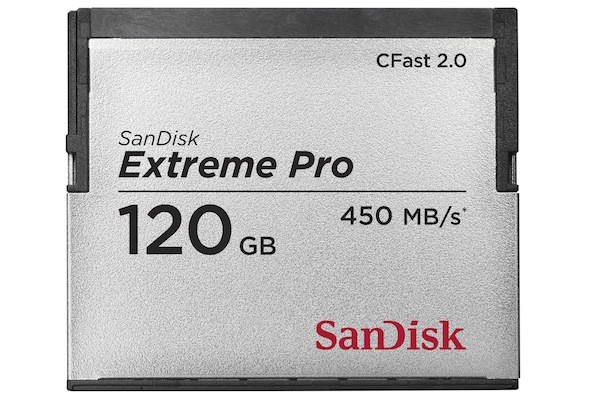SanDisk can claim two milestones with the Extreme Pro CFast 2.0: it's both the fastest memory card available of any kind, and also the first CFast 2.0 memory card. CFast 2.0 is a CompactFlash memory card variant, with the CompactFlash Association having announced the specification last year, boasting speeds of up to 600 MB/s through a SATA interface.
The Extreme Pro CFast 2.0 card doesn't quite reach the maximum transfer speeds of the CFast 2.0 spec, but it does support SSD-like performance. SanDisk claims the card is capable of 450 MB/s read speeds and 350 MB/s write speeds, saying it will take just four minutes to transfer a 100 GB file from the memory card.

As the CFast 2.0 specification is new, there will be limited support for these cards in the recording equipment they're designed for. The Arri Arima, a professional documentary-style video camera, will be one such device that will support SanDisk's new CFast 2.0 card, with the super-fast speeds allowing 2K video to be recorded at 200 frames per second and at high bitrates.
For users who want to stick with traditional CompactFlash cards, SanDisk has also announced the highest capacity CF card they've produced, coming with 256 GB of storage. It'll cost you though, with SanDisk listing a regular retail price of $1,809 for the high-capacity memory card.
SanDisk hasn't specified exactly how much the Extreme Pro CFast 2.0 cards - available in 60 GB and 120 GB capacities - will cost, but we can't imagine they'll be cheap either when they hit stores "soon".